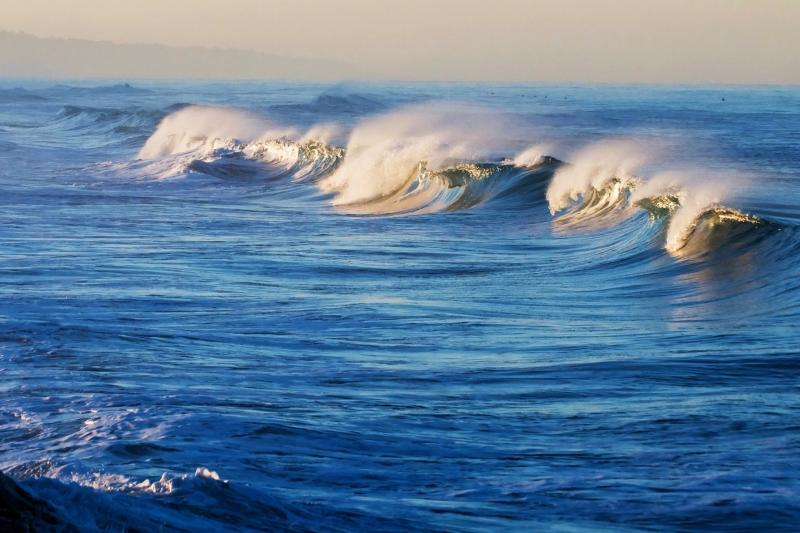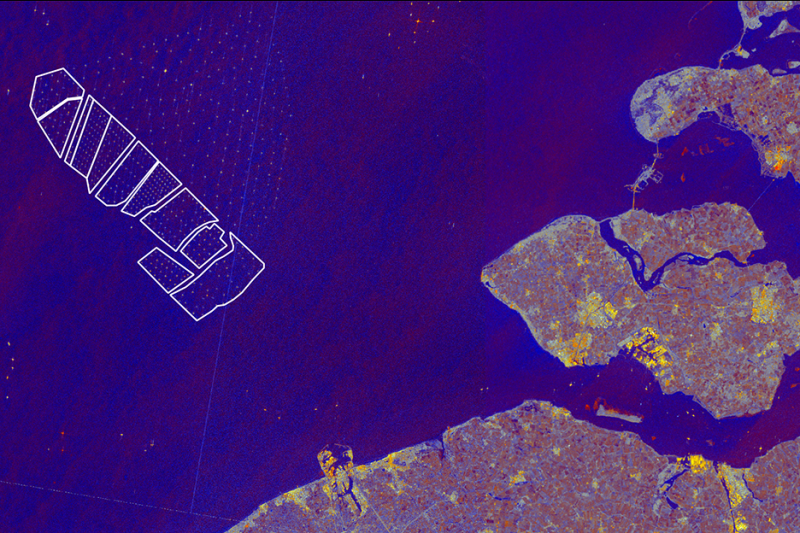Monitoring wind speed with Sentinel-1
Wind is a key resource to enable the green energy transition and stop the emission of greenhouse gasses that is driving climate change. Sentinel-1 wind speed observations can provide insights into ocean wind patterns and help to optimize the location of new wind farms, understand wind-driven movement of oil and plastics and make forecasts of waves and ocean currents.
Sentinel-1’s eye on the ocean
The Synthetic Aperture Radar (SAR) sensor onboard the Sentinel-1 satellite measures a signal that strongly relates to the roughness of the surface. Over oceans, wind is the main factor determining the surface roughness. The Sentinel-1 Level-2 OCeaN (OCN) products provide wind speed and direction estimates at a resolution of 1 km, retrieved based on this relationship between the Sentinel-1 signal, surface roughness and wind speed. The temporal resolution equals that of the Sentinel-1 Level-1 products and depends on the region of interest. The North Sea for example is observed every 1–8 days since the failure of Sentinel-1B. This will be brought back to every 1–3 days after the launch of Sentinel-1C. The wind speed products are valuable for a range of applications, like ocean waves and currents forecasting, wind energy analyses and oil spill monitoring.
From wind speed to wind energy potential
Sentinel-1-based wind speed observations can be used to calculate the wind power that can be generated by wind turbines. These calculations rely on some assumptions, like a neutral atmosphere, and require several characteristics of the wind turbines:
- Turbine height: to convert the surface wind speed to the wind speed at the turbine
- Rotor diameter: to calculate the turbine swept area
- Mechanical and electrical conversion coefficient: i.e. the fraction of incoming wind power that can be converted into mechanical power by the turbine
- Rated power: the maximal power the turbine can produce
- Cut-in and the cut-out wind speed: the speeds at which the turbine starts and stops working
When these characteristics are known, spatial and temporal trends in wind energy potential can be analyzed in order to optimize the location of future wind farms.
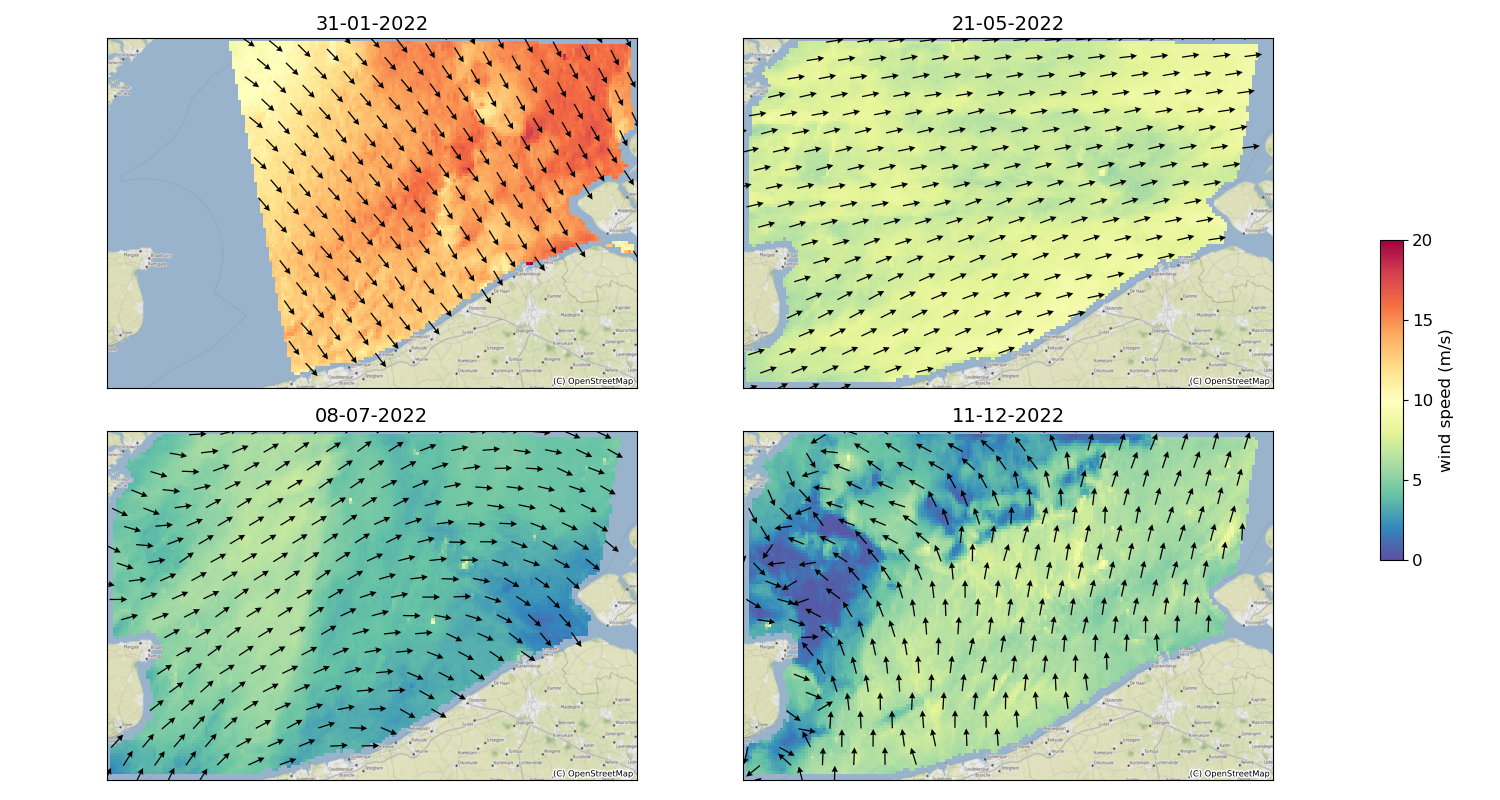
Analyze the wind energy potential at a specific location
Wind energy in the Belgian North Sea
The Belgian part of the North Sea contains eight wind farms comprising 399 wind turbines (status on February 2023). These have a total capacity of 2262 MW, which corresponds to about 10% of the total electricity consumption in Belgium. Based on the number of turbines and their characteristics, the generated wind energy can be calculated for each farm. Data from Elia, the Belgian transmission system operator for high-voltage electricity, are used to validate the Sentinel-1-based retrievals.
6.8 m/s
Analyzing the wind speed throughout 2022, we can identify the different storms that lashed NW Europe in January and February. In summer, a long-lasting high-pressure zone caused high temperatures and low winds. The annual average surface wind speed in the wind farm region was 6.8 m/s.
2.3 GW
The generated wind power follows a similar pattern as the wind speed, ranging between 13.7 and 2261.2 MW across the 2022 Sentinel-1 overpasses. During winter and autumn, the rated wind speed was exceeded several times.
0.93
The Sentinel-1-based power estimates agree well with the actual generated wind power. For 2022, the correlation between both was 0.93, with a positive bias of 159 MW.
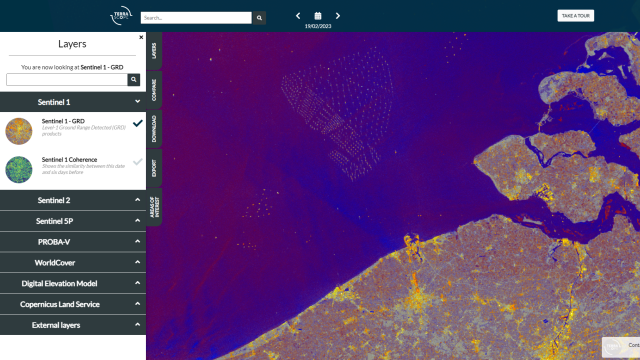
Sentinel-1
The Sentinel-1 Level-2 OCN product provides wind speed and wind direction retrievals.

Virtual Machines
Terrascope cloud virtual machines have all satellite data locally available for processing and analysis.
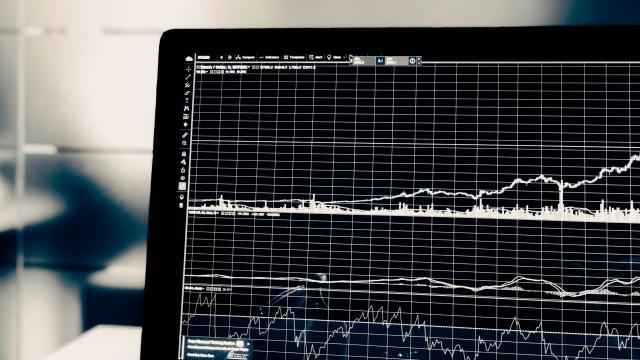
Open Data
Open data stimulate developments both within and across domains. Here, open data provided by Elia were used to validate the Sentinel-1 based retrievals.
